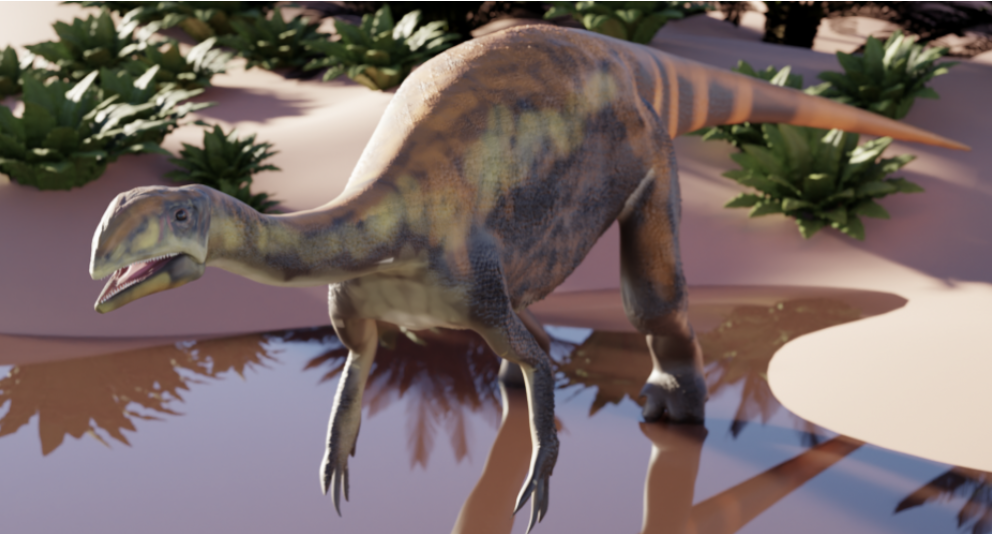
THE ICE SHEET'S HIDDEN STORIES

- When Greenland was green
- Dinosaurs lived in Greenland
- The landscape under the ice
You solve the tasks by using
- Text
- Audio
- Drawing tools
- Pictures
This part is based on pp. 34-41 – there you will find information about the subject.
Learn about the melting of the ice that makes Greenland rise.
And about dinosaurs in Greenland here.
Today most of Greenland is covered by ice but 450,000 years ago the climate was much warmer.
In a layer of sediment remains of butterflies, moths, flies and beetles have been found by DNA analysis.

What kind of vegetation existed in Greenland 2 milllion years ago?
Search the Internet to find out how Greenland got its name.
What did the Danish scientist find in 1979?
This is a reconstruction of a dinosaur species of which bones have been found in Greenland.
It is a formerly unknown species and it has been called “issi saaneq” that means cold bones.

- 450 million years ago the continents as we know them today were a continous supercontinent. What is it called?
- Where was Greenland located in the time of this supercontinent, and how was the climate?
Click on this link to see whether issi saaneq was herbivorous or carnivorous.
Under the ice in Greenland the landscape has been pressed down to form a kind of bowl.

This model (page 40) shows Greenland’s landscape under the ice sheet. How do you read the model?
What do you see in the model on page 41?
What would happen if all of the ice sheet melted?
Which animals would become extinct or find other places to live if the ice disappeared?
Today most of Greenland is covered by ice but 450,000 years ago the climate was much warmer.
In a layer of sediment remains of butterflies, moths, flies and beetles have been found by DNA analysis.

What kind of vegetation existed in Greenland 2 milllion years ago?
Search the Internet to find out how Greenland got its name.
What did the Danish scientist find in 1979?
This is a reconstruction of a dinosaur species of which bones have been found in Greenland.
It is a formerly unknown species and it has been called “issi saaneq” that means cold bones.

- 450 million years ago the continents as we know them today were a continous supercontinent. What is it called?
- Where was Greenland located in the time of this supercontinent, and how was the climate?
Click on this link to see whether issi saaneq was herbivorous or carnivorous.
Under the ice in Greenland the landscape has been pressed down to form a kind of bowl.

This model (page 40) shows Greenland’s landscape under the ice sheet. How do you read the model?
What do you see in the model on page 41?
What would happen if all of the ice sheet melted?
Which animals would become extinct or find other places to live if the ice disappeared?



